About the VISION Registry
Created by the Melanoma Research Foundation’s (MRF) CURE OM initiative, the Virtual Information System to Improve Outcomes and Networks (VISION) registry is a first-of-its-kind patient reported, patient powered registry for ocular melanoma patients, caregivers, researchers and clinicians. In 2015, when a patient reported registry was identified as a critical need in the OM community, the MRF’s CURE OM initiative committed to leading the project with the consultation and strong support of the Patient Registry Steering Committee, CURE OM community and leading OM researchers, clinicians and experts from around the world.
“Researchers and clinicians have been working tirelessly to connect and collaborate with others in the field to identify the most effective treatments for those with ocular melanoma. However, without a comprehensive registry, those efforts are limited,” said Sara Selig, MD, MPH, Co-Founder and Director of the CURE OM initiative. “The registry also provides a meaningful way for patients to know they are connected to others across the country and contributing to the collective work to address this disease. The VISION registry truly is a revolutionary moment created by and for the ocular melanoma community.”
A Patient Powered, Patient Reported Registry
A registry is an online database hosted in the internet cloud by a platform provider that securely collects, stores, monitors, analyzes and shares data. A patient powered registry is driven by the patient and caregiver community in partnership with disease experts to set its objectives, develop the technology and manage its outputs, including sharing the data with researchers, international partners and industry. Patient reported data is patient information directly inputted by patients and their legal representatives. The patient always determines what data to share and under what conditions.
The Purpose of the VISION Registry
To date, it has been extremely challenging for the medical community to access information that would better inform OM prevention, diagnostics, treatments and outcomes. Additionally, OM patients have had limited opportunities to participate in the advancement of research and treatment development. Experts and patients agree there are numerous factors that contribute to these challenges. Ocular melanoma is a rare disease with complicated clinical care that requires a multi-disciplinary team of physicians including ophthalmologists, medical oncologists and others.. Patients are also often diagnosed and receive treatment in different locations from where they live. The patient pathway is therefore very difficult to accurately capture, and there is not one entity collecting standardized data on OM cases spread across time and geography. Databases that are in existence are disparate, often linked to a single institution, have unique
Individual objectives or are limited by other discrepancies due to challenges with diagnosis and the patient pathway. Until now, there has not been a multi-center, single source of information that tracks the patient experience from the onset of the disease to its end, and consequently allows researchers to study OM in a systematic coordinated approach to better understand it and develop better treatments.
“For a rare disease that affects only 6 people per 1 million in the United States, developing clinically significant data from a large patient population has been a long-standing obstacle for researchers and has denied the ocular melanoma community the recent treatment breakthroughs that have been achieved in cutaneous melanoma,” said Marlana Orloff, MD, Medical Oncologist at Thomas Jefferson University Hospital and founding member of the CURE OM Patient Registry Steering Committee. “CURE OM’s VISION registry represents a historic opportunity for research collaboration to accelerate the pace of scientific discovery to benefit patients.”



